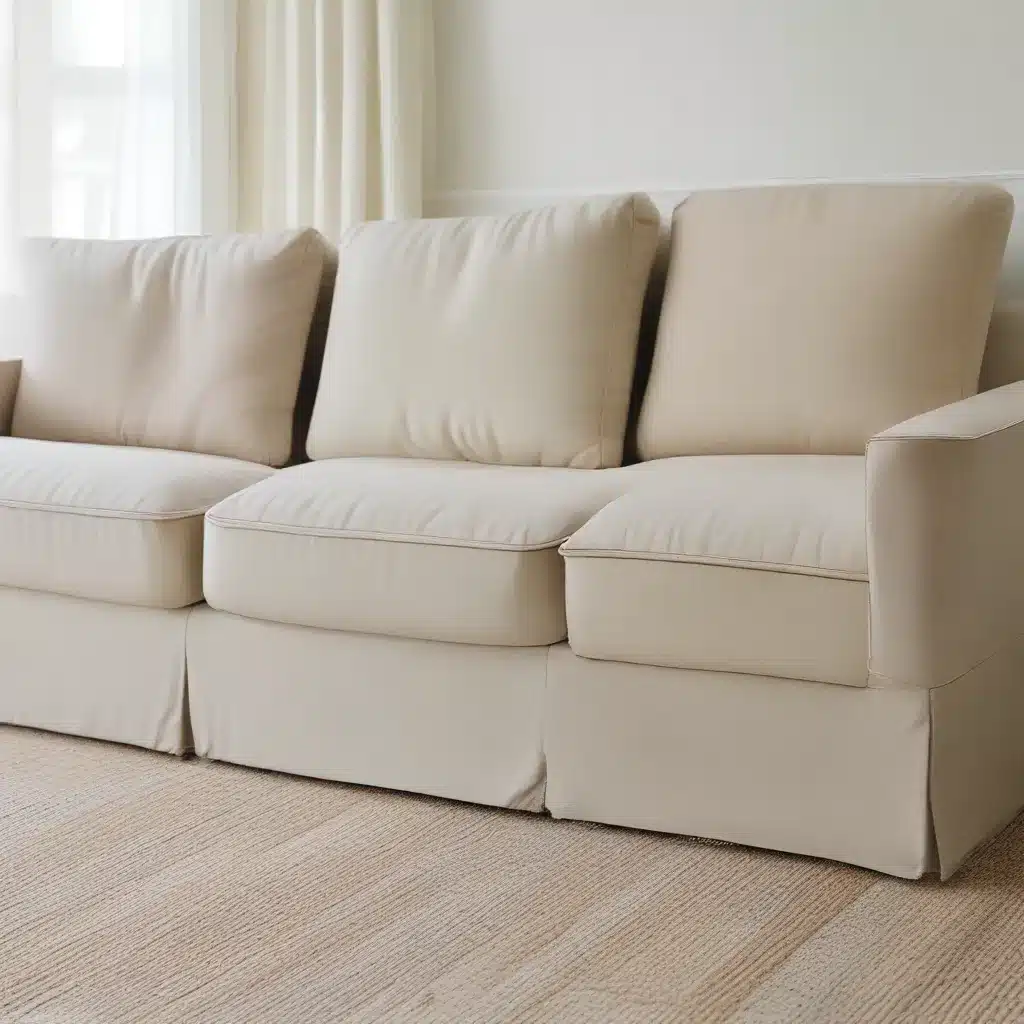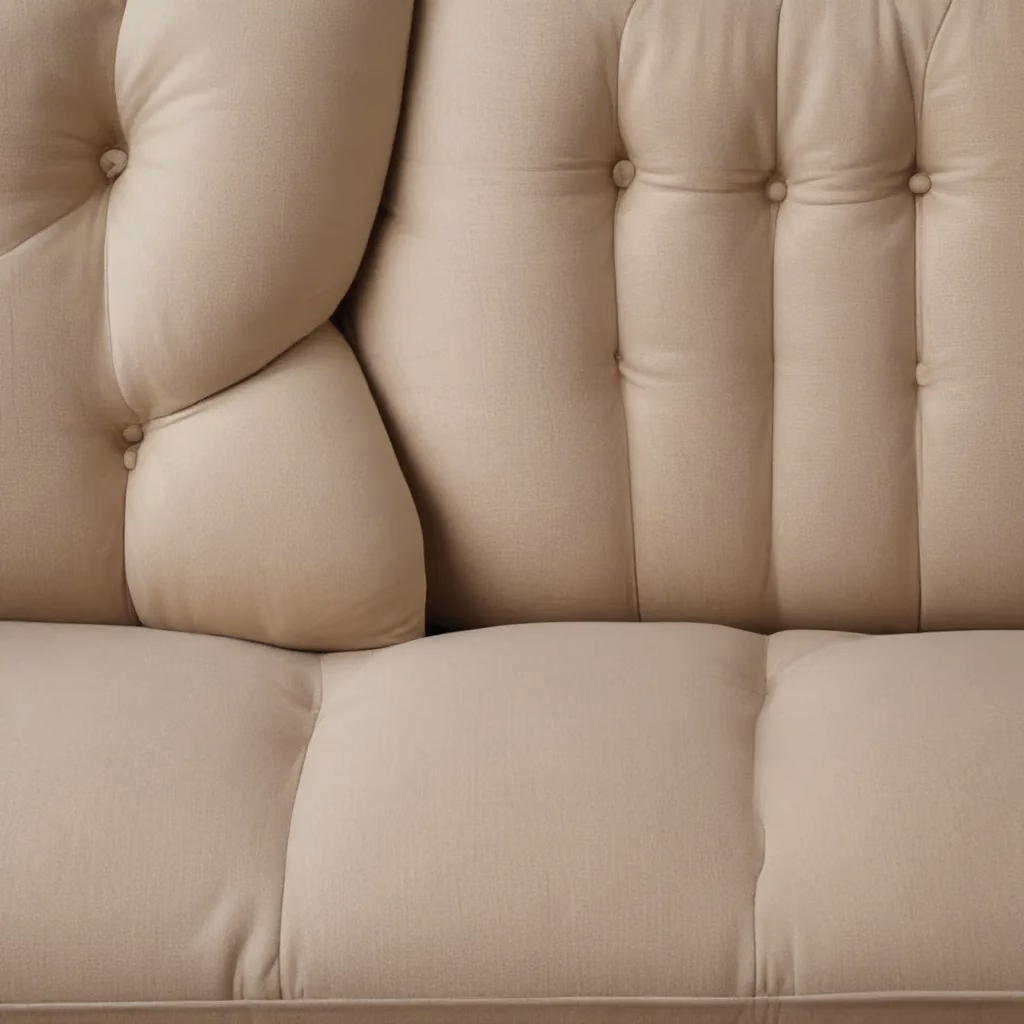The Slump Struggle
Ah, the dreaded sofa cushion slump. It’s like watching your favorite pair of jeans slowly sag and stretch out over time, leaving you with a saggy, unflattering fit. But when it happens to your beloved couch, it can feel even more frustrating.
You know the feeling – you sink into the cushions, only to find yourself practically grazing the springs below. It’s enough to make you want to toss the whole thing out and start fresh. But before you give up and start couch shopping, let me share a little secret that could save your beloved seat.
The Hidden Zipper Hack
For years, I thought my sofa cushions were just destined to be forever flattened and misshapen. I’d try fluffing them, rotating them, even adding extra pillows in a desperate attempt to restore their former glory. But nothing seemed to work – until one fateful day when a clever reader shared a game-changing tip.
Turns out, many sofas have a hidden zipper at the bottom of the cushions. I know, I couldn’t believe it either! But sure enough, when I took a closer look, there it was – a little zipper, tucked away and practically begging to be discovered.
Reclaiming Cushion Fluff
So what’s the deal with this magical zipper, you ask? Well, it’s your ticket to reviving those sad, lifeless cushions and restoring them to their former fluffiness. All you have to do is unzip that sucker, pull out the old stuffing, and replace it with something more substantial.
The experts recommend using high-density foam – the kind that’s firm and supportive, not the cheap, squishy stuff that’ll just flatten out again in no time. Wrap it in a layer of batting for extra softness, zip it back up, and voila – your couch cushions are reborn!
The Great Stuffing Debate
Of course, the choice of stuffing material is a highly personal one. Some swear by the luxurious feel of down-filled cushions, while others prefer the sturdy support of polyurethane foam. And then there’s the feather-and-batting crowd, who love the plush, sink-right-in experience.
No matter which camp you fall into, the key is finding a balance between comfort and longevity. After all, there’s no point in having the fluffiest, most cloud-like cushions if they’re just going to turn into pancakes after a few months of use.
| Stuffing Material | Pros | Cons |
|---|---|---|
| High-Density Foam | Sturdy, supportive, and long-lasting | Can feel a bit firm and unyielding |
| Down Filling | Luxuriously soft and plush | Can be expensive and requires regular fluffing |
| Feather and Batting | Offers a cozy, sink-in feel | May not hold its shape as well as other options |
| Polyester Fiber | Affordable and low-maintenance | Can flatten out more quickly than other fillings |
The Importance of Density
When it comes to choosing the right foam for your couch cushions, density is key. The higher the density, the more support and longevity you can expect. Sofa Spectacular, a custom sofa company in the UK, recommends going for a minimum of 2.2 pounds per cubic foot (PCF) for optimal performance.
Anything less than that, and you risk those cushions turning into pancakes faster than you can say “fluff and fold.” But don’t go overboard, either – a density that’s too high can result in a cushion that feels more like a rock than a comfy seat.
Preventative Measures
Of course, the best way to deal with sofa cushion flattening is to prevent it from happening in the first place. And believe it or not, there are a few simple tricks you can try to keep those cushions plump and perky for years to come.
Rotate, Rotate, Rotate
One of the easiest ways to extend the life of your sofa cushions is to rotate them regularly. This helps to evenly distribute the wear and tear, preventing any one area from becoming overly compressed.
Make a habit of flipping and swapping the cushions every few weeks, or at the very least, every time you vacuum the couch. It may seem like a small thing, but it can make a big difference in keeping your cushions looking and feeling their best.
Fluff and Fluff Again
Fluffing your sofa cushions is another essential maintenance task. And no, I’m not just talking about a quick pat or two – I mean really getting in there and giving them a good shaking and fluffing.
Aim to do this at least once a week, or whenever you notice the cushions starting to look a little flat. You can even try placing a few tennis balls in the dryer with the cushion covers for a quick fluff boost.
Avoid Excess Weight
It might be tempting to use your sofa as a makeshift storage unit, but resist the urge! Piling heavy objects on top of the cushions can lead to premature flattening and sagging.
The same goes for letting your pets (or kids) jump and lounge on the couch. Sure, it’s cute in the moment, but those little bodies and movements can really take a toll over time. So try to keep the weight and activity to a minimum, and your cushions will thank you.
The Sofa Slump Solution
At the end of the day, dealing with flattened sofa cushions is kind of like dealing with a stubborn stain on your favorite shirt – it can be a real pain, but with the right approach, you can get it looking as good as new.
And who knows, you might even discover a hidden zipper or two along the way. So the next time your couch starts to sag, don’t despair – just grab a screwdriver, get ready to get your hands a little dirty, and get ready to revive those cushions back to their former glory.




